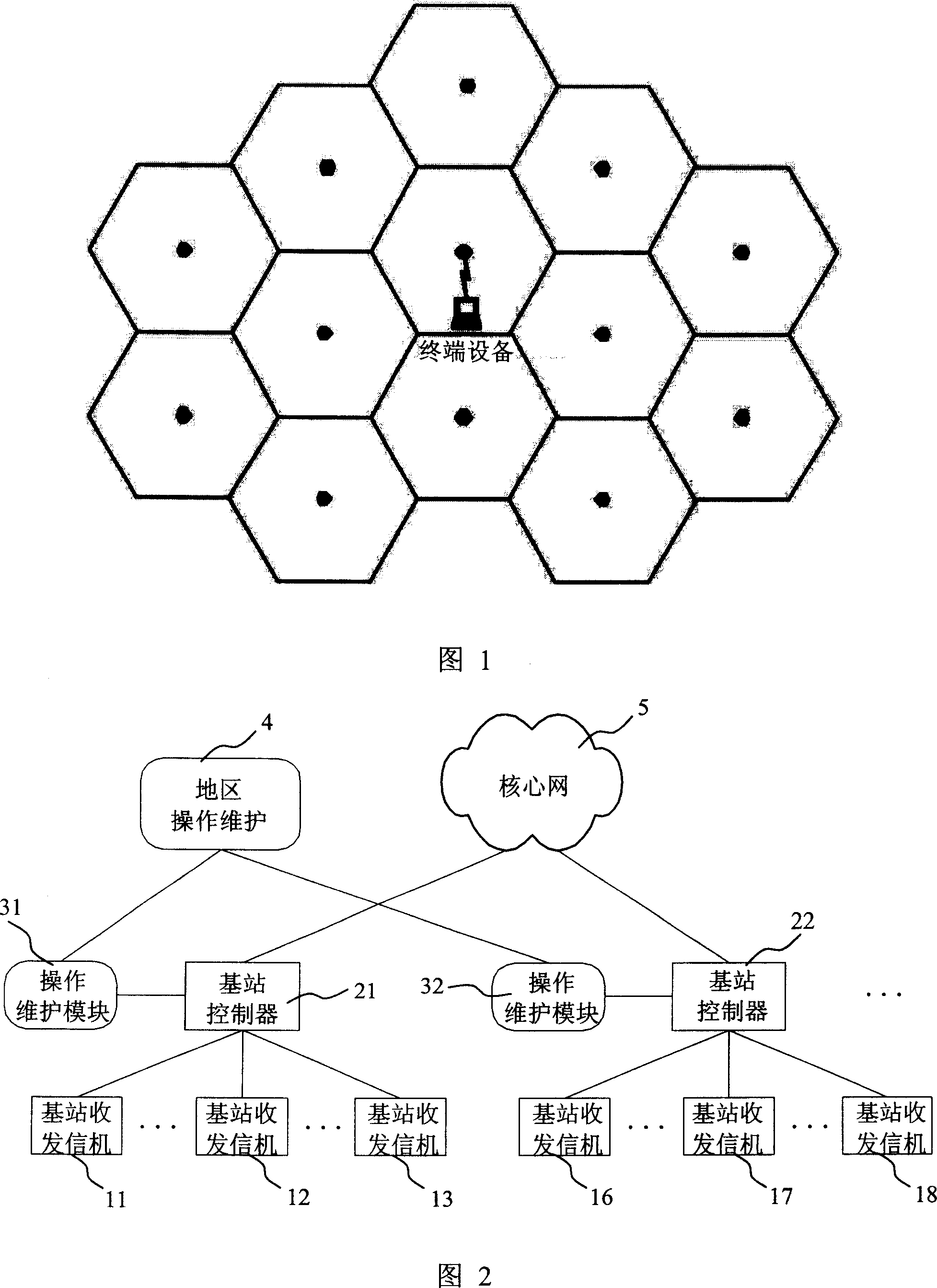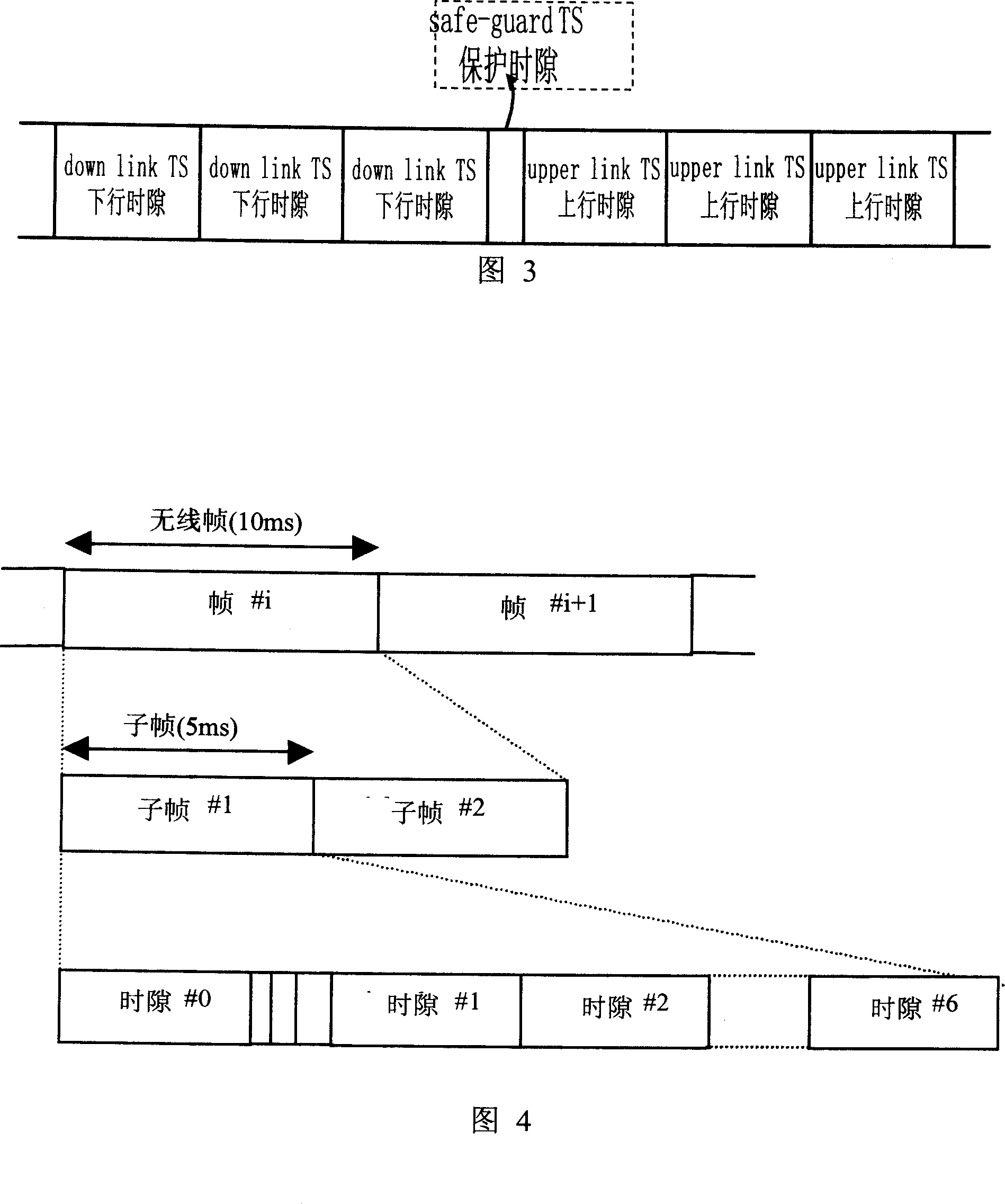Cross-zone handover method for time division synchronous CDMA multi-frequency-point community cellular network
A technology of code division multiple access and time division synchronization, applied in the field of wireless communication, can solve the problems of co-channel interference, limited spreading gain, communication interruption in handover area, etc., and achieve the effect of ensuring communication quality and reducing the level of co-channel interference
- Summary
- Abstract
- Description
- Claims
- Application Information
AI Technical Summary
Problems solved by technology
Method used
Image
Examples
Embodiment Construction
[0039] Taking the cellular network organized by TD-SCDMA multi-frequency cells as an example, the method of the present invention will be further described in conjunction with the accompanying drawings.
[0040] The present invention is based on the idea of dividing a cell into inner and outer areas, combined with the handover process, through wireless resource (time slot, frequency point, etc.) Users in the cell communicate using mutually orthogonal radio resources to avoid co-channel interference. The TD-SCDMA multi-frequency point cell system of the present invention configures mutually orthogonal wireless resources for adjacent cells through the operation and maintenance background, which is called handover reserved resources hereinafter. The meaning of mutual orthogonality is that the reserved resources or time slots of adjacent cells are staggered from each other, or the frequency points are staggered from each other, or both are staggered.
[0041] In a multi-frequen...
PUM
 Login to View More
Login to View More Abstract
Description
Claims
Application Information
 Login to View More
Login to View More - R&D
- Intellectual Property
- Life Sciences
- Materials
- Tech Scout
- Unparalleled Data Quality
- Higher Quality Content
- 60% Fewer Hallucinations
Browse by: Latest US Patents, China's latest patents, Technical Efficacy Thesaurus, Application Domain, Technology Topic, Popular Technical Reports.
© 2025 PatSnap. All rights reserved.Legal|Privacy policy|Modern Slavery Act Transparency Statement|Sitemap|About US| Contact US: help@patsnap.com



